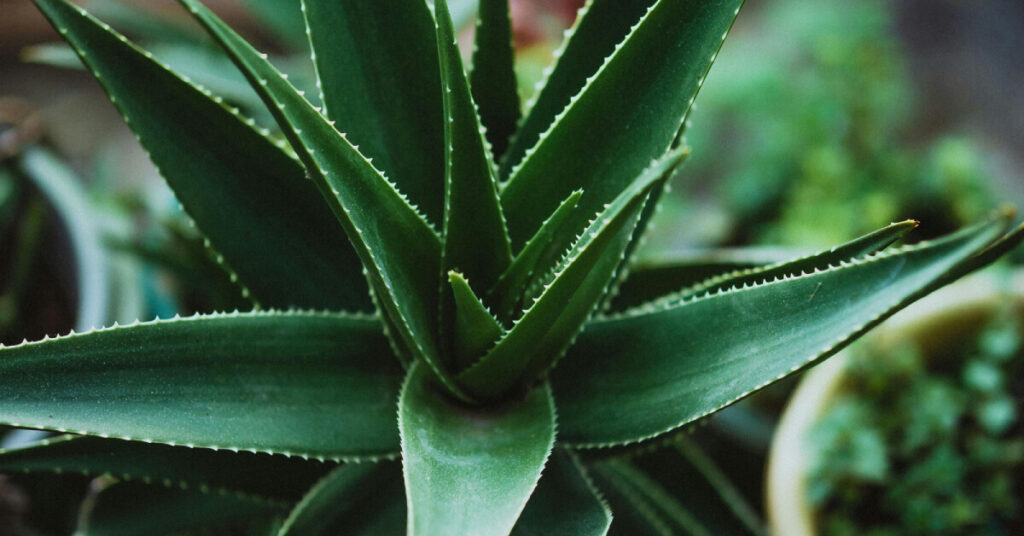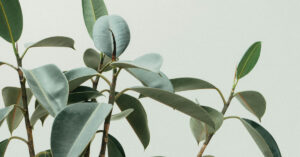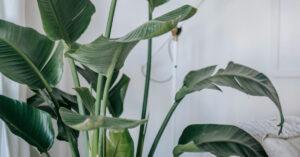Aloe barbadensis miller
Aloe vera stands as one of the most beloved and practical houseplants, earning its place in homes worldwide for both its striking appearance and incredible versatility. This succulent wonder combines easy care with genuine utility, making it an essential addition to any indoor plant collection.
Why Aloe Vera Deserves a Place in Your Home
Native to the Arabian Peninsula, aloe vera has been cultivated for over 4,000 years and is now found in homes across the globe. Its thick, fleshy leaves form elegant rosettes that can grow 12-24 inches tall and wide, making it perfect for tabletops, windowsills, or floor displays. The plant’s architectural form adds modern appeal to any space while requiring minimal maintenance.
What truly sets aloe vera apart is its dual nature as both an ornamental and medicinal plant. The clear gel inside its leaves has been used for centuries to soothe burns, cuts, and skin irritations, earning it the nickname “the plant of immortality” among ancient Egyptians. As an added bonus, NASA studies have shown that aloe vera helps purify indoor air by removing formaldehyde, making it both beautiful and beneficial for your home environment.
Care Requirements
Light Requirements
Bright indirect light to partial sun
Aloe vera thrives in bright, indirect sunlight near a south or west-facing window. While it can tolerate some direct morning sun, harsh afternoon rays can scorch the leaves, turning them brown or red. If you notice your aloe’s leaves becoming thin and pale, it’s likely not getting enough light. Conversely, if they turn reddish-brown, reduce the light exposure.
Watering
Low to moderate frequency
The golden rule for aloe vera is “when in doubt, don’t water.” This drought-tolerant plant stores water in its thick leaves and prefers to dry out completely between waterings. Water deeply but infrequently—typically every 2-3 weeks during the growing season and even less in winter.
To check if your aloe needs water, insert your finger into the soil about 2 inches deep. If it’s completely dry, it’s time to water. Pour water slowly around the base until it drains from the bottom holes, then empty the saucer to prevent standing water.
Soil Type
Well-draining cactus/succulent mix
Proper drainage is absolutely critical for aloe vera success. Use a commercial cactus and succulent potting mix, or create your own by combining regular potting soil with perlite, coarse sand, or pumice in a 1:1 ratio. The soil should drain quickly while still retaining some moisture.
Always choose pots with drainage holes—this cannot be overstated. Terra cotta pots are ideal as they allow excess moisture to evaporate through the walls.
Temperature
55-80°F (13-27°C)
Aloe vera enjoys warm temperatures similar to most homes. It can tolerate brief dips to 40°F (4°C) but should be protected from frost. Keep your plant away from cold drafts, air conditioning vents, and heating sources that create temperature fluctuations.
Humidity
Low
Unlike many houseplants, aloe vera actually prefers low humidity environments. Average household humidity (30-50%) is perfect. Avoid placing it in bathrooms or other high-humidity areas, as this can lead to fungal problems. Good air circulation around the plant helps prevent moisture-related issues.
Fertilizing
Light feeding during growing season
Aloe vera has minimal fertilizer needs. During spring and summer, apply a diluted liquid fertilizer (half the recommended strength) once monthly. Avoid fertilizing in fall and winter when the plant enters dormancy. Over-fertilizing can cause weak, floppy growth and reduce the plant’s natural resilience.
Seasonal Care Adjustments
Spring/Summer (Growing Season):
- Water every 2-3 weeks when soil is completely dry
- Provide bright, indirect light
- Monthly fertilizing
- Monitor for new growth and pups
Fall/Winter (Dormant Period):
- Reduce watering to every 4-6 weeks
- Stop fertilizing completely
- Protect from cold drafts and temperature drops
- Growth slows significantly – this is normal
Mature Size and Lifespan
Aloe vera typically reaches 12-24 inches tall and wide when mature, usually taking 2-3 years to reach full size under good conditions. With proper care, these plants can live for decades, often producing numerous offspring through pups. Some well-cared-for specimens have been known to live 20+ years, becoming impressive centerpiece plants.
Flowering
Under optimal conditions, mature aloe vera plants (3+ years old) may produce spectacular flower spikes in late winter or early spring. These tall, tubular orange or yellow flowers emerge from the center of the rosette and can reach 2-3 feet high. While flowering is less common indoors, it’s more likely if the plant experiences a cool, dry winter period followed by warmer spring conditions.
Difficulty Level
Easy
Aloe vera ranks among the most forgiving houseplants, making it perfect for beginners, busy professionals, or frequent travelers. The plant provides clear visual cues about its needs—healthy leaves are thick and plump, while thirsty leaves become thinner and softer.
Pet and Child Safety
Important: Aloe vera is mildly toxic if ingested by pets or children. The plant contains compounds called saponins that can cause stomach upset, vomiting, and diarrhea. While not typically life-threatening, consumption should be avoided. Place aloe plants out of reach of curious pets and small children, or consider pet-safe alternatives if ingestion is a concern.
Varieties to Consider
While Aloe barbadensis miller is the classic medicinal aloe, several attractive varieties make excellent houseplants:
- Aloe aristata (Lace Aloe): Smaller with white spotted leaves
- Aloe brevifolia (Short-leaf Aloe): Compact with blue-green leaves
- Aloe variegata (Tiger Aloe): Distinctive white striped pattern
Plants That Pair Well with Aloe Vera
Aloe vera’s low-maintenance nature makes it an excellent companion for other drought-tolerant plants. Group it with plants that share similar light and watering requirements for easy care routines and stunning displays.
Perfect Companions:
- Snake Plant (Sansevieria) – Similar watering schedule and light tolerance
- ZZ Plant (Zamioculcas zamiifolia) – Equally forgiving and drought-resistant
- Jade Plant – Fellow succulent with comparable care needs
- Rubber Plant – Thrives in bright indirect light with infrequent watering
- Peace Lily – While preferring slightly more water, pairs well aesthetically
Succulent Collections: Create beautiful succulent gardens by pairing aloe with echeveria, haworthia, crassula varieties, and small cacti. These combinations work wonderfully in shallow, wide containers and create striking textural contrasts.
Aesthetic Pairings: The architectural form of aloe vera complements trailing plants like pothos or string of pearls when arranged on plant stands or shelving units, creating dynamic vertical displays with varying textures and growth habits.
Common Problems and Solutions
Overwatering
Symptoms: Soft, mushy leaves; yellowing; root rot; plant collapse
Solution: Reduce watering frequency, improve drainage, repot if roots are damaged
Underwatering
Symptoms: Thin, wrinkled leaves; brown leaf tips; stunted growth
Solution: Water thoroughly and establish a more consistent watering schedule
Too Much Sun
Symptoms: Brown, scorched patches; reddish discoloration
Solution: Move to bright indirect light; filtered sun exposure
Pest Issues
Symptoms: Scale insects, mealybugs, aphids
Solution: Inspect regularly; treat with insecticidal soap or neem oil
Propagation
Aloe vera readily produces “pups” or offsets around the base of the mother plant. These can be carefully separated and planted individually:
- Remove the plant from its pot
- Gently separate pups with roots attached
- Allow cut surfaces to dry for 24-48 hours
- Plant in well-draining soil
- Wait one week before first watering
Harvesting and Using Aloe Gel
To harvest aloe gel for topical use:
- Choose a thick, mature outer leaf
- Cut close to the base with a clean, sharp knife
- Slice the leaf lengthwise and scoop out the clear gel
- Use fresh gel immediately or store in the refrigerator for up to one week
Note: Always patch test on a small area of skin first, and consult healthcare providers for serious burns or wounds.
Your Gateway to Successful Indoor Gardening
Aloe vera represents the perfect marriage of beauty and function in the houseplant world. Its sculptural form complements modern décor while its legendary healing properties provide practical benefits. Whether you’re a complete beginner or an experienced plant parent, aloe vera offers reliable satisfaction with minimal effort.
Start with one plant, and you’ll likely find yourself adding more varieties to your collection. Few plants offer such a winning combination of low maintenance, visual appeal, and genuine utility—making aloe vera a true cornerstone of successful indoor gardening.




